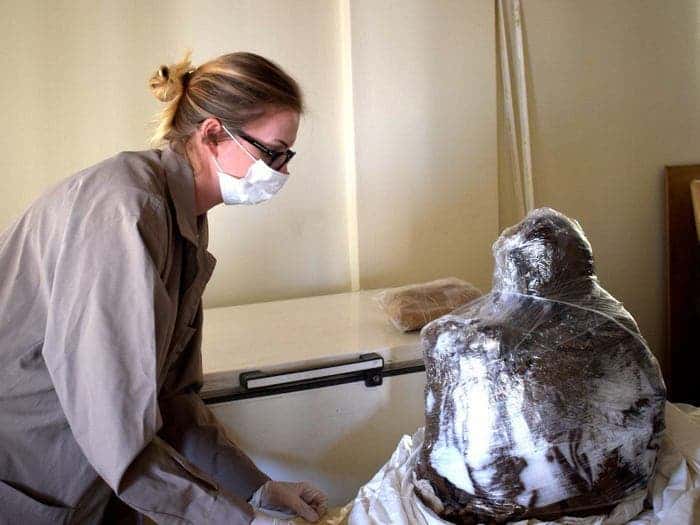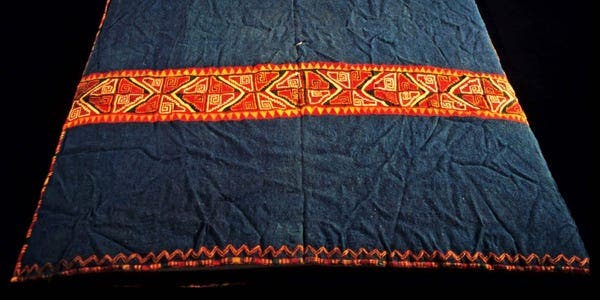
The Inca Empire was arguably the most powerful state ever in the pre-Columbian Americas. The ruins of this once mighty state, the artifacts found by archaeologists across the years, and first-hand accounts of Spanish conquistadors speak of untold riches. However, the Inca’s wealth was built with the blood of its people, with thousands sacrificed on altars to appease the gods — gods that apparently fed on the blood of the pure.
Most human sacrifices involved either teenagers or children, and sometimes they were given psychoactive drugs to consume. The impression among scholars has generally been that the victims took drugs to connect with the supernatural forces they were about to give their lives for.
However, a new study that found traces of coca leaves and the powerful hallucinogen ayahuasca arrived at a totally different conclusion. Rather than priming them for a 3rd-degree contact with one of the hundreds of “huacas” (Incan gods), the authors believe that the victims of human sacrifices were drugged to make them less anxious and more compliant as they approached certain doom.
Bound for sacrifice
In the mid-1990s, hikers scaling the Ampato volcano in southern Peru found the mummified bodies of a teenage Inca girl and two more little girls, between six and seven years old.
Subsequent examinations of the mummies concluded that they were all victims of human sacrifice. The volcano is an important site of worship in Andean culture and embodied one of the Inca huacas. The fact that the mummies were found at a height of over five kilometers suggests they died under very unusual circumstances. And, finally, the children’s remains were found amongst precious artifacts, including ceramic vessels, intricately decorated clothes, and figurines made of gold and silver.


Everything about these mummies indicates they were the victims of sacrifice, which has kept archaeologists fascinated for years. But it was only recently that scientists performed a chemical analysis of the remains, and the results were quite shocking.
According to the toxicological report, the Ampato mummies contained chemical compounds found in coca leaves, the plant material used in the manufacturing of cocaine, and ayahuasca, one of the most powerful hallucinogenic drugs in the world.
The most powerful empire in the Americas
During the time the Spanish conquistadors first arrived in the Americas in the 16th century, the Inca Empire was at the height of its power. Although their empire existed for a scant 100 years before being cut short by the Spaniards, the Incas managed to create 26,000 miles of roads, ruled over 10 million people, and imposed their language and culture from one end of the Andes to the other. In a very real sense, the Incas were the “Romans” of the New World and, like the Romans, they were fantastic empire builders.
One of their most important tools for asserting political control over the vast territories stretching across the Andes were religious ceremonies — and no ceremony was more important than the Capacocha, a gruesome ritual that involved human sacrifices.
Although the Inca left no written records behind, archaeologists have managed to piece together a picture of what the capacocha entailed through a combination of historical documents by the conquistadors — which need to be taken with a grain of salt, as they were invaders with a vested interested in making their conquered look bad –oral accounts passed down from generation to generation by the indigenous people, and archaeological evidence.
We know, for instance, that the human sacrifices most often involved young women and children, which the Inca people deemed pure and unspoiled, and hence worthy of the gods. The prime candidates were women who were beautiful and virgins, and who would be housed away from common people while they awaited the day they would be sacrificed by priests.
The children destined for the great honor of being sacrificed to the gods had to travel to the capital city of Cusco, where they would be greeted by the emperor himself. However, this was an arduous journey, one that could last months.
According to some accounts, the children would be brought to the top of a mountain, the home of the huacas. During the capacocha, the children’s hearts would be cut out of their chests, a gruesome image that some may recognize from in the Oscar-nominated movie Apocalypto (which featured Maya, not Inca).
However, the Ampato mummies show no signs of cuts or penetration. They were more likely strangled, buried alive, or even killed by the extreme cold at the top of the Andes.
Killing innocent children sounds barbaric and cruel to us, but the Inca people believed with conviction that the sacrifices prevented droughts, famines, volcanic eruptions, and all manners of natural disasters brought upon them by the gods.
Human nature would not allow the Inca to kill their own children unless they thought the rewards were in the best interest of society at large or they thought the children were being sent to a better place. The Inca were not alone either — the Celts of Ireland and Britain frequently made human sacrifices to their gods, as did the Mongols, Scythians, early Egyptians, and various Mesoamerican groups, who all made human sacrifices, for one reason or another.
The Spaniards claimed that the Inca relied on coca leaves as a medicine to treat various ailments and reduce the feeling of hunger. There were also hints that the Inca used ayahuasca, a powerful hallucinogenic drink brewed from local tropical plants that can induce near-death experiences to improve mood, prepare soldiers for battle, and connect with the gods.
However, it was only recently that researchers led by Dagmara Socha, a bioarchaeologist from the Centre for Andean Studies at the University of Warsaw, could confirm ayahuasca was indeed employed in ceremonies.
Curing the anxiety of a death ritual

The toxicological analysis of the mummies from the sacred mountain revealed the presence of coca leaves and harmine, a substance that blocks the breakdown of the mood-regulating serotonin and dopamine, and which is used to this day to treat depression. Harmine is one of the components of ayahuasca, marking the first archaeological evidence of the use of the psychedelic brew among the Incas.
The combined use of the coca leaves and harmine, which produce ecstatic feelings but do not induce hallucinations, suggest that the victims were drugged to make them more compliant with the ritual. Since the children were seen as a gift for the gods, they needed to look well-fed and well dressed, beautiful, and, most of all, happy.
“Chroniclers mentioned the importance of the victims’ moods. The Incas may have consciously used the antidepressant properties of Banisteriopsis caapi to reduce the anxiety and depressive states of the victims,” the authors of the study wrote.
The findings appeared in the Journal of Archaeological Science.



